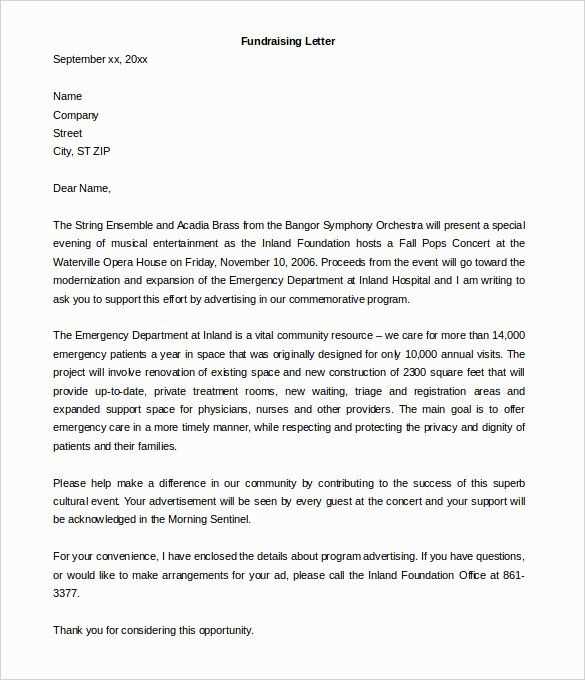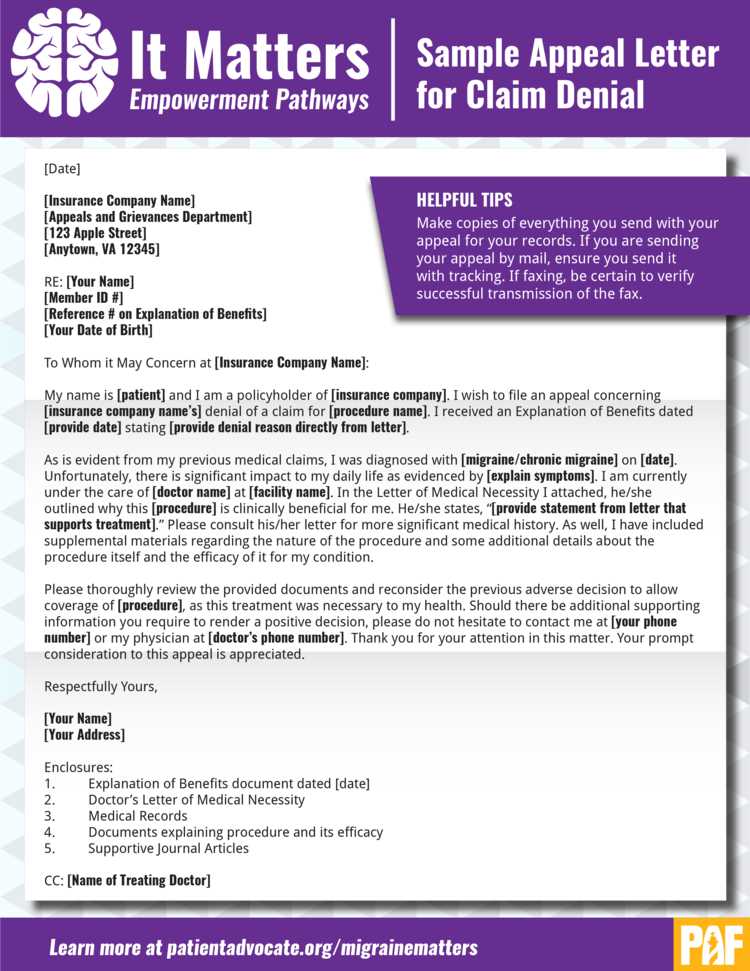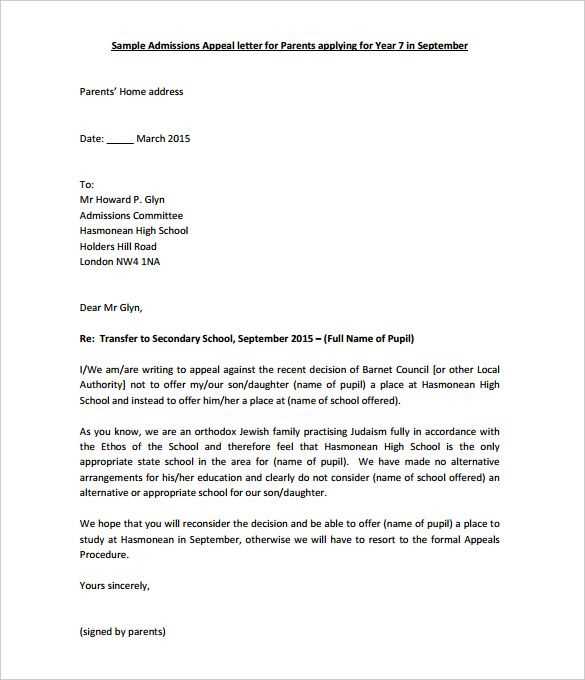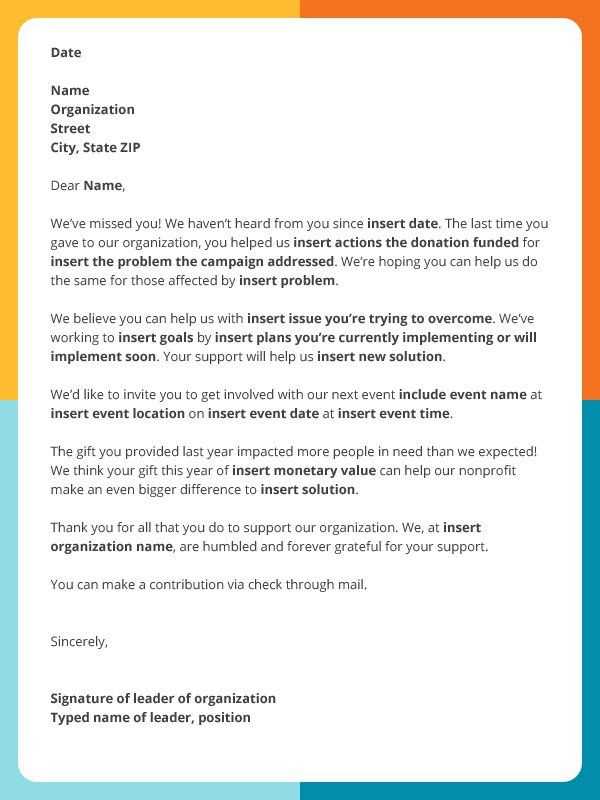Fundraising appeal letter template

Craft a letter that speaks directly to your audience’s heart. Focus on a personal connection, creating a sense of urgency and purpose from the beginning. Let the reader understand exactly how their contribution will make a difference. A direct call to action is necessary, guiding them to take the next step without hesitation.
Outline the cause with clarity, providing specific examples of what the funds will achieve. Highlight the tangible impact that a donation will have, whether it’s providing resources, support, or helping an individual directly. Be specific–the more detailed your message, the stronger the appeal will be.
Use an approachable tone to make your readers feel welcomed and valued. Avoid jargon or complicated language that might alienate them. Instead, use simple, compelling language that keeps the message clear and focused. Your goal is to make it easy for the reader to say “yes” to your request.
Identifying Your Target Audience
Focus on understanding the needs, values, and motivations of the individuals or groups you want to reach. Tailor your messaging to appeal directly to their interests. Analyze their demographics–age, location, income, and occupation–while also considering their interests, challenges, and aspirations. This insight allows you to create a compelling message that resonates with them.
Research the best communication channels for your audience. Some prefer email or social media, while others may respond better to direct mail or events. Choose platforms where your audience is most active to increase engagement.
Be specific in defining the goals of your fundraising campaign. Ask yourself: What does this audience care about? What motivates them to contribute? Once you have answers, incorporate those insights into your appeal, making it relevant to their values and priorities.
Build an emotional connection. Don’t just ask for donations–show your audience the tangible impact their support will have. Use personal stories, images, and testimonials that reflect the causes they care about, creating a sense of shared purpose.
Segment your audience if necessary. Different groups may respond to different aspects of your message. For instance, younger supporters might value innovation, while older generations may prefer stories of legacy and long-term impact. Adjust your approach accordingly to maximize response.
Choosing the Right Tone and Language

Adjust your tone based on your audience. For a formal fundraising letter, use polite, respectful language, and a serious tone. For a more casual appeal, keep the tone light, conversational, and approachable, while still maintaining respect. Make sure the language is clear and avoids jargon or overly complex terms. It’s important that the reader easily understands your message and feels comfortable engaging with it.
Match the Audience’s Expectations
Consider the nature of the cause you’re supporting. If you’re reaching out to a professional or corporate audience, choose language that conveys trustworthiness and respect. For grassroots campaigns, a warmer, more passionate tone might resonate better. Know who you’re talking to and use language that aligns with their values and communication style.
Maintain Clarity and Urgency
Your language should inspire action. Be direct but compassionate–highlight the impact their contribution will have without overwhelming them with excessive details. Keep sentences concise, with a focus on the immediate need or cause, and make the request clear and easy to follow.
Crafting a Compelling Opening
The opening of your fundraising letter should grab attention and motivate the reader to continue. Focus on presenting an immediate and tangible connection to the cause. Start with a short, impactful sentence that highlights the urgency or need at hand. Use specific details to illustrate the issue, making it relatable and immediate for your reader.
Make It Personal and Direct

Address the reader directly, using language that makes them feel included. Rather than a formal introduction, establish a relationship right away. Speak to their values, showing how they can make a difference. Personal stories or compelling examples can help create that connection from the first sentence.
Set the Tone for the Rest of the Letter
After drawing the reader in, set the expectations for the letter’s message. A strong opening lays the groundwork for the rest of your letter, clearly stating what you hope to achieve with their support. Keep the tone aligned with your mission and goals–be it urgent, hopeful, or inspiring.
| Effective Opening Examples | What Makes Them Compelling |
|---|---|
| “In the next 24 hours, we need your help to save 100 lives.” | Directly communicates urgency and the immediate impact of the reader’s action. |
| “Last year, your generosity helped us build a school in a community that had none.” | Personalizes the reader’s contribution, showing past success and reinforcing the power of support. |
Presenting Your Cause and the Need

Clearly state the purpose of your cause and why it requires immediate attention. Be specific about the issue you’re addressing and the impact it has on individuals, communities, or the environment. Use real data, personal stories, and examples to make the need relatable and urgent.
Focus on the Impact
Show how the issue affects people’s lives. Whether it’s a lack of resources, growing demand, or an unforeseen crisis, illustrate how these factors are intensifying the situation. Help your audience visualize the problem by providing concrete examples.
Explain the Urgency
Describe why now is the right time to act. Highlight the consequences of inaction, and give examples of missed opportunities or worsening conditions. Use facts to demonstrate the pressing nature of the cause and how timely support can make a significant difference.
- Share statistical data or findings that reinforce the urgency.
- Present stories of individuals or communities directly affected.
- Outline how a delay could worsen the situation or create additional challenges.
Be direct in your call for help. Show how contributions, whether large or small, will make a tangible difference in addressing the need you’ve presented. Ensure the reader understands that their support is both necessary and impactful.
Creating a Clear Call to Action
Directly ask your readers to take a specific action. Make it easy for them to understand what you want and how to do it. Use simple, straightforward language. For example, instead of saying “support our cause,” say “Donate today to help us reach our goal.” This removes any ambiguity and encourages quick responses.
Be specific. Instead of vague instructions like “help us,” say something like “Your $50 donation will provide meals for 5 families.” Numbers and concrete details make the request more tangible and compelling.
Use urgency to motivate action. Include time-sensitive phrases like “Donate by Friday to double your impact” or “Only 10 spots left to join.” Creating a sense of urgency can push potential donors to act before they delay or forget.
Make the next steps crystal clear. If you’re asking for a donation, include a link or a button that stands out. If you want them to sign up for an event, provide easy instructions for registration. The smoother the process, the more likely your call to action will be successful.
Expressing Gratitude and Offering Recognition
Make your supporters feel valued by expressing sincere appreciation for their contributions. Acknowledge their generosity with specific references to their impact, showing that their support makes a tangible difference. Personalize your message to highlight how their donation aligns with your mission and goals.
Highlight the impact: Let donors know exactly how their funds are being used. Mention specific projects or initiatives that are made possible because of their support. This helps build a stronger connection between their contribution and the outcomes achieved.
Offer recognition: Publicly acknowledge donors in your communications, whether it’s through newsletters, social media shoutouts, or special events. This not only shows appreciation but also encourages others to contribute. Tailor the recognition to the donor’s level of involvement, ensuring it feels meaningful.
Don’t forget to express your ongoing gratitude: Let donors know that their support is valued long after the donation is made. Reaffirm their importance in the mission and offer updates on progress, keeping them engaged with your cause.